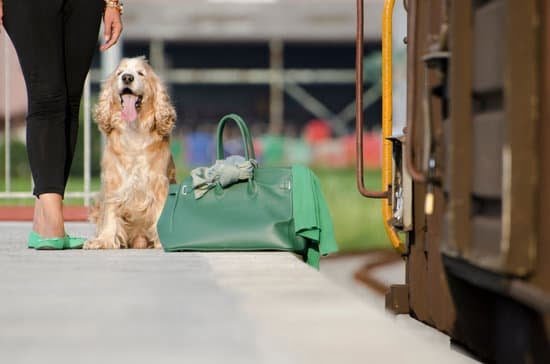Are you wondering how to train a dog to listen off leash? Off-leash training is not only a valuable skill for your furry companion but also crucial for their safety and well-being. In this article, we will explore the importance of off-leash training and provide you with essential tips and techniques to achieve success in this area.
Setting a strong foundation is key when it comes to off-leash training. By establishing basic obedience commands such as sit, stay, and come, you are laying the groundwork for your dog to listen and respond even without being tethered to a leash. Building trust is also essential in developing a strong bond with your dog, which will ultimately enhance their willingness to follow commands off-leash.
Utilizing positive reinforcement training techniques can make the learning process enjoyable for your dog while strengthening their obedience skills. Gradual progression from on-leash to off-leash training is important to ensure that your dog is ready for the challenge. By incorporating distraction training and focusing exercises in various environments, you can help your dog maintain their attention and respond reliably when off leash.
Setting the Foundation
Establishing a strong foundation of basic obedience commands is crucial when it comes to training a dog to listen off-leash. These fundamental commands serve as the building blocks for your dog’s understanding of how to behave and respond in different situations. Here are some essential commands that you should focus on teaching your dog:
- Sit: Teaching your dog to sit on command not only helps with impulse control but also sets the stage for further training.
- Stay: The stay command is important for keeping your dog in place, especially when off-leash and in potentially distracting environments.
- Come: The recall command is vital for off-leash training as it ensures that your dog will return to you promptly when called.
Incorporating positive reinforcement techniques, such as using treats or praise, can be highly effective in reinforcing these basic obedience commands. By rewarding your dog for obeying commands, you are creating a positive association with listening and following instructions.
Consistency is key when establishing these foundational commands. Practice regularly with short training sessions to ensure that your dog understands and responds consistently to each command. Remember to be patient and encouraging during the training process, as building a solid foundation takes time and dedication.
By laying a strong groundwork of basic obedience commands, you are setting the stage for successful off-leash training. These foundational skills will not only help improve communication between you and your dog but also create a strong bond built on trust and understanding.
Building Trust
Building a strong bond with your dog is essential for successful off-leash training. The relationship you have with your furry companion plays a significant role in their willingness to listen and follow commands, especially when they are not constrained by a leash. Here are some tips on how to strengthen the bond with your dog to enhance their listening skills off-leash:
Quality Time Together
Spending quality time with your dog is crucial in building trust and strengthening your bond. Engage in activities that both you and your dog enjoy, such as playtime, training sessions, or simply going on walks together. This dedicated time allows you to understand each other’s cues and builds a foundation of mutual respect.
Positive Reinforcement and Rewards
Using positive reinforcement techniques during training helps reinforce good behavior and deepens the bond between you and your dog. Offer verbal praise, treats, or toys as rewards when your dog listens to commands off-leash. This creates a positive association with following instructions and encourages them to continue obeying even without a physical constraint like a leash.
Consistent Communication
Consistent communication is key in developing trust between you and your dog. Use clear verbal cues, hand signals, or body language to communicate effectively during training sessions. By being consistent in your commands and expectations, you help build confidence in your dog’s ability to understand what is expected of them off-leash.
By focusing on building trust and strengthening the bond with your dog, you set a solid foundation for successful off-leash training. Remember that patience, consistency, and positive reinforcement are essential components in creating a strong connection with your canine companion that will ultimately lead to improved listening skills in various environments.
Utilizing Positive Reinforcement Training Techniques
Positive reinforcement training techniques are a valuable tool when it comes to training your dog to listen off-leash. This method focuses on rewarding your dog for good behavior rather than punishing them for unwanted actions. By using positive reinforcement, you can create a strong motivation for your dog to follow commands and maintain focus even when off-leash.
One of the key aspects of positive reinforcement training is consistency. Make sure to reward your dog immediately after they obey a command, whether it’s sitting, staying, or coming when called. This instant reward helps your dog associate the action with a positive outcome, encouraging them to repeat the behavior in the future. Treats, praise, toys, or any other rewards that your dog enjoys can be used effectively in this process.
In addition to consistency, it’s important to vary the rewards you use during training sessions. This prevents your dog from getting bored with one type of reward and keeps them engaged in the learning process. Experiment with different treats or toys to see what motivates your dog the most. By keeping the training fun and exciting for your furry friend, you’ll make it easier for them to stay focused and responsive when off-leash.
| Positive Reinforcement Tips | Benefits |
|---|---|
| Reward immediately after obeying a command | Creates association between behavior and positive outcome |
| Vary rewards during training sessions | Prevents boredom and keeps dog engaged |
Gradual Progression
Training a dog to listen off leash requires a gradual progression from on-leash training to ensure success and safety for both you and your furry companion. Here are some steps to help you seamlessly transition your dog from on-leash to off-leash training:
- Start in a Controlled Environment: Begin by practicing off-leash commands in a secure, fenced area with minimal distractions. This will allow your dog to focus on you and the training without the risk of running off.
- Reinforce Basic Commands: Before going completely off leash, make sure your dog has mastered basic obedience commands such as sit, stay, come, and heel. Practice these commands consistently to build a strong foundation for off-leash training.
- Gradually Increase Distance: Once your dog is reliably responding to commands in a controlled environment, start increasing the distance between you and your furry friend. Practice recall exercises from varying distances to reinforce their ability to listen even when further away.
As you progress with off-leash training, remember that consistency and patience are key. Celebrate small successes along the way and be prepared for setbacks as your dog learns to navigate the freedom of being off leash.
- Introduce Distractions Slowly: Gradually add distractions such as other people, dogs, or enticing smells while practicing off-leash commands. This will help your dog learn to focus on you despite external stimuli.
- Use Positive Reinforcement: Rewarding good behavior with treats, praise, or playtime will motivate your dog to continue listening off leash. Keep training sessions fun and engaging to maintain their interest in following your commands.
- Stay Alert and Prepared: Always keep an eye on your surroundings during off-leash training sessions to anticipate any potential hazards or challenges. Have treats or toys handy to redirect your dog’s attention if needed.
By following these gradual progression steps and being consistent in your approach, you can effectively train your dog to listen off leash and enjoy the freedom of exploring together in a safe and controlled manner.
Distraction Training
Practice in Different Environments
One of the key aspects of off-leash training is teaching your dog to listen and focus in various environments. Start by practicing in a familiar, low-distraction environment such as your backyard or a quiet park. Once your dog is consistently responding to commands in these settings, gradually increase the level of distraction. Take your training sessions to busier parks, streets, or even pet-friendly stores to help your dog generalize their obedience skills.
Use High-Value Rewards
When working on distraction training with your dog off-leash, it’s important to use high-value rewards to maintain their focus. Treats that are especially irresistible to your dog can be used as a powerful motivator for following commands despite distractions. Consider using small pieces of cheese, cooked chicken, or freeze-dried liver treats during training sessions. Remember to keep the treats hidden until after your dog has successfully completed a command to prevent them from getting overly excited.
Practice Recall Reliably
One of the most crucial commands for off-leash training is a reliable recall. Teaching your dog to come when called regardless of distractions can prevent potentially dangerous situations when they are off-leash. Start by practicing recall in a controlled environment without distractions and gradually increase the level of difficulty.
Use a consistent verbal cue such as “come” or “here” paired with positive reinforcement like treats or praise every time your dog responds appropriately. Consistent practice will help strengthen your dog’s response to recall commands in various environments.
By incorporating these strategies into your distraction training regimen, you can effectively teach your dog how to focus and respond obediently when off-leash in different situations. Remember that patience, consistency, and positive reinforcement are key components of successful off-leash training sessions. With dedication and practice, you’ll soon enjoy the freedom and bond that comes with having a well-trained and attentive off-leash companion by your side.
Safety First
Training your dog to listen off leash can be a rewarding and liberating experience for both you and your furry companion. However, it is essential to prioritize safety during this training process.
One of the first precautions to take when starting off-leash training is to ensure that your dog is in a safe and secure environment. This means choosing a location free from traffic, other aggressive animals, or any potential hazards that could pose a risk to your dog’s safety.
Another crucial safety measure to consider is having proper identification on your dog at all times, whether it be through a collar with ID tags or a microchip. In the event that your dog does wander off or get lost during off-leash training, having identification greatly increases the chances of being reunited with your pet.
Additionally, always carry treats or favorite toys with you when practicing off-leash training as they can serve as valuable tools for redirecting attention and reinforcing positive behavior.
When embarking on off-leash training adventures, it’s also important to be mindful of the weather conditions. Extreme temperatures can affect your dog’s ability to focus and follow commands effectively.
Be sure to keep an eye out for signs of overheating or fatigue in your canine companion and provide plenty of water breaks throughout the training session. By taking these precautions and staying alert, you can create a safe environment for both you and your dog while working on off-leash listening skills.
Consistency Is Key
Once you have successfully trained your dog to listen off-leash, it is crucial to maintain their skills and behavior over time. Consistency is key in reinforcing the training they have received and ensuring that they continue to obey commands even without a leash. Regular practice sessions are essential for keeping your dog’s off-leash skills sharp and reliable.
To maintain your dog’s off-leash skills, incorporate short training sessions into your daily routine. This can include practicing obedience commands such as sit, stay, come, and heel in various environments to reinforce their training. By consistently working with your dog, you are reinforcing their understanding of the commands and strengthening the bond between you and your furry companion.
Additionally, continue to use positive reinforcement techniques during training sessions to encourage good behavior. Rewarding your dog with treats, praise, or toys when they successfully listen off-leash will motivate them to continue following commands. Consistency in using rewards will help reinforce their desired behavior and encourage them to remain focused and obedient in different situations. Remember that ongoing practice and positive reinforcement are key components in maintaining your dog’s off-leash listening skills.
Troubleshooting Common Off-Leash Training Challenges
Training a dog to listen off-leash can be a rewarding experience, but it is not without its challenges. One common issue that many dog owners face during off-leash training is distractions. Dogs are naturally curious creatures, and they may be easily distracted by sights, sounds, or smells in their environment.
To address this challenge, it is important to practice off-leash training in different environments with varying levels of distraction. Start in a familiar, quiet setting and gradually introduce more distractions as your dog becomes more comfortable and responsive.
Another common challenge in off-leash training is maintaining your dog’s focus and obedience when they are off-leash. One effective way to overcome this challenge is to use positive reinforcement techniques consistently throughout the training process. Reward your dog with treats, toys, or praise when they respond correctly to commands while off-leash. This will help reinforce good behavior and encourage them to listen even when distractions are present.
It is also important to stay patient and understanding when troubleshooting off-leash training challenges with your dog. Remember that every dog is unique and may require different approaches to training.
If you encounter difficulties such as disobedience or lack of focus during off-leash sessions, take a step back, reassess your training methods, and make any necessary adjustments. With time, consistency, and dedication, you can successfully train your dog to listen effectively off-leash and enjoy the freedom of exploring together without restraint.
Celebrating Success
In conclusion, successfully training your dog to listen off-leash is a rewarding experience that strengthens the bond between you and your furry companion. By following the outlined steps and putting in the time and effort, you can enjoy the freedom of having your dog obey commands even without a leash. Remember, consistency is key in maintaining these skills, so continue to practice and reinforce your dog’s training regularly.
As you celebrate the success of your off-leash training efforts, take pride in the progress both you and your dog have made together. The trust and communication built through this process can lead to a happier and healthier relationship with your pet. Watching your dog respond to commands even without a physical tether can be incredibly satisfying and fulfilling for any pet owner.
Ultimately, learning how to train a dog to listen off-leash requires patience, dedication, and a lot of positive reinforcement. With proper training techniques, trust-building exercises, and consistency in practicing commands in various environments, you can achieve success in off-leash obedience. So go ahead and enjoy the newfound freedom of exploring with your well-trained canine companion by your side.
Frequently Asked Questions
How Do I Get My Dog to Listen Off the Leash?
Training a dog to listen off the leash requires building a strong foundation of obedience commands while on the leash first. Start in a quiet, familiar area and gradually transition to more distracting environments. Use positive reinforcement, such as treats or praise, when your dog follows commands to reinforce good behavior.
How Do You Discipline a Dog That Doesn’t Listen?
Discipline should be focused on redirecting unwanted behavior rather than punishment. Consistency is key – use verbal cues like “No” or “Stop” along with a firm tone of voice to indicate disapproval. Redirect their attention to something more appropriate and reward them when they comply.
How Do I Teach My Dog to Listen Outside?
Teaching a dog to listen outside involves gradually increasing distractions in their training environment. Start by reinforcing basic commands in your yard before moving to other outdoor locations like parks or streets. Use high-value treats and plenty of praise to motivate and reward your dog for listening despite the distractions.

Welcome to the blog! I am a professional dog trainer and have been working with dogs for many years. In this blog, I will be discussing various topics related to dog training, including tips, tricks, and advice. I hope you find this information helpful and informative. Thanks for reading!





